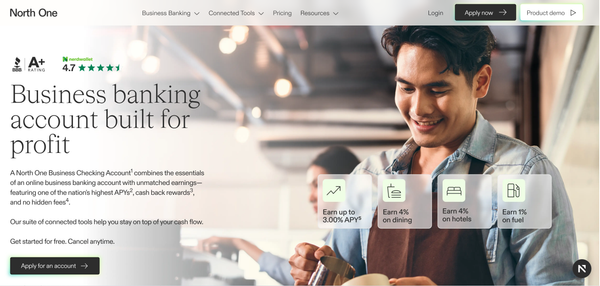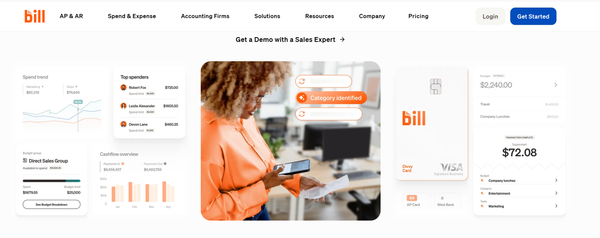Mastering Google's New Landscape: Essential Strategies for Businesses and Publishers to Overcome AI and Algorithm Challenges

You’ve built up your online presence, and invested in content, and just as you’re starting to see results, Google drops a new algorithm update. Oh, the agony! But don't worry. We’re here to help you not only survive but thrive amid these changes. Understanding the latest Google Algorithm changes is crucial for tweaking your SEO strategy and maintaining your rankings.
1. What Are the Latest Google Algorithm Changes?
1.1 Understanding Algorithm Updates
The latest Google Algorithm updates have significantly shifted the landscape, affecting various aspects of SEO. The core updates focus on E-E-A-T: Expertise, Authoritativeness, and Trustworthiness. Google now places a higher value on high-quality content and credible sources. Did you see your rankings fluctuate for no apparent reason? It could be due to these tweaks.
Another vital development is the Page Experience Update, which emphasizes user experience factors like site speed, mobile-friendliness, and secure browsing. These changes mean you can no longer stuff your content with keywords and backlinks. Instead, you need to focus on delivering a better user experience.
Pro-tip: Regularly check Google’s official announcements or follow SEO news sites to stay updated with the latest changes.

1.2 How They Affect Your Site's Ranking
Recent changes in Google's algorithm have turned many websites' rankings upside down. Sites previously ranking on the first page have seen their positions plummet, causing many to panic. If you've been affected, you’re not alone. Understanding how these changes impact your site is critical.
The new emphasis on E-E-A-T can hit businesses that haven’t invested in building credible backlinks or authoritative content. Additionally, the Page Experience Update can result in lower rankings for sites that load slowly or aren’t optimised for mobile devices. Neglecting these factors can hurt your visibility and, ultimately, your revenue.
Pro-tip: Conduct a quick audit of your site to identify weaknesses in E-E-A-T and user experience.
1.3 Responding to Changes: Immediate Steps
So, you've noticed a drop in your site’s rankings. What’s next? First and foremost, remain calm. Panicking will only cloud your judgment. Here's a quick checklist to help you respond effectively:
- Audit Your Content: Ensure it aligns with E-E-A-T principles.
- Improve Page Speed: Utilise tools like Google PageSpeed Insights.
- Mobile Optimisation: Make sure your site is mobile-friendly.
- Secure Your Site: HTTPS is now non-negotiable.
- Update Backlinks: Focus on acquiring backlinks from authoritative sources.
Taking these steps immediately can stabilise your rankings and even improve them over time.
Pro-tip: Use analytics tools to track your site's performance and make data-driven decisions.
By focusing on these aspects, you can make the necessary adjustments to not just survive but thrive in this continually evolving SEO landscape. If you need expert help, platforms like Bloomclicks offer comprehensive SEO services to help you align with these latest changes and stay ahead of the competition.
2. How to Adjust Your SEO Strategy
2.1 Auditing Your Current SEO Performance
Auditing your current SEO is vital. It helps identify what's working and fixes what's not. Begin with analysing your keywords. Are they driving traffic or just sitting there like a dud? Use tools like Google Analytics or SEMrush to check which keywords bring in the bacon.
- Identify which pages are ranking well and which aren't.
- Examine your backlinks; high-quality links are key.
- Review your content. Is it well-structured? Engaging?
Next, don’t neglect your technical SEO aspects. Crawling errors, broken links, and slow page speeds are common culprits. Use tools like Screaming Frog to spot these issues. Fixing these technical gremlins can give an immediate boost to your site's performance.
- Ensure your site is mobile-friendly.
- Check your site’s loading speed.
- Resolve any 404 errors.
Pro-tip: Regularly update your XML sitemap and submit it to Google Search Console.

2.2 Strategic Keyword Selection and Usage
When it comes to selecting keywords, it's not just about volume. It's about relevance and intent. Start with long-tail keywords. They may attract less traffic but are often more qualified, converting searchers into customers.
- Use tools like Ahrefs and Ubersuggest to find these gems.
- Focus on search intent. What does your audience want?
- Create cluster content around these keywords.
Sprinkle your keywords naturally throughout your content. Stuffing them is a sure way to get on Google’s bad side. Instead, integrate them into headings, subheadings, and meta descriptions.
- Ensure keywords appear in the first 100 words of your text.
- Use synonyms and related terms to avoid redundancy.
- Keep your meta titles and descriptions enticing yet keyword-rich.
Pro-tip: Regularly revisit and refresh your keywords. Market trends change, and so should your strategy.
2.3 Improving Site Structure and User Experience
Site structure is crucial for keeping visitors engaged and helping Google understand your content. A well-organised site is like a tidy workspace—everything is easier to find. Use a clear hierarchy: your main pages should branch out into sub-pages logically.
- Use breadcrumbs to enhance navigation.
- Create an easy-to-follow URL structure.
- Maintain a logical flow from main categories to minor ones.
By improving user experience (UX), you encourage visitors to stick around and explore, increasing your dwell time and decreasing bounce rates—both positive signals to Google.
- Speed is king. Slow loading times can ward off visitors. Use tools like Google's PageSpeed Insights to streamline your site.
- Easy navigation. Visitors should find what they're looking for in three clicks or fewer.
- Compelling visuals and videos engage visitors better than text alone.
Pro-tip: Use A/B testing to find out what design elements work best for your audience.
Adjust your SEO strategy to stay in Google’s good graces and drive consistent traffic. Whether you’re running an e-commerce site or a content-driven blog, these steps can help you meet your goals. Happy optimising!
3. Leveraging AI for SEO Success
3.1 AI Tools for SEO: An Overview
Ditch the old-school tactics and embrace AI tools that revolutionise how you do SEO. These advanced systems help automate repetitive tasks, giving you more brainpower for strategy. For example, SEMrush and Ahrefs are well-known for keyword research, backlink analysis, and tracking competitors. Think of them as your digital Swiss army knives. Clearscope's use of natural language processing (NLP) enhances content creation by identifying relevant keywords and optimising articles to rank higher.
Pro-tip: AI tools like Grammarly and SurferSEO can help you fine-tune your content in real time, ensuring it’s SEO-friendly and reader-centric. No more juggling multiple tools. Consolidate for efficiency!
Instead of manually combing through data, AI-powered analytics platforms can pinpoint where you're losing traffic and why. Google Analytics employs machine learning to offer valuable insights, helping refine your SEO strategy. MarketMuse stands out for content optimisation, suggesting relevant topics and competitive analysis, ensuring your content calendar is always robust and data-driven.

3.2 Integrating AI into Your SEO Strategy
Here’s the low-down: your SEO strategy won’t hit home runs without integrating AI. Start with automated keyword clustering, which saves hours of tedious work. AI tools can group related keywords, allowing for laser-focused content creation. Platforms like BrightEdge and Conductor make this task a breeze. These tools can also provide predictive analysis to help you understand what topics will trend next.
- Automate repetitive tasks like keyword research
- Predict trends and optimise for future success
- Group-related keywords for targeted content creation
AI also assists in personalised user experiences by analysing massive datasets to draw insights about user behaviour. This data can then be used to create more targeted marketing campaigns. For instance, personalised email campaigns or product recommendations based on past behaviours can elevate your customer engagement metrics.
Pro-tip: Use AI in customer segmentation to send hyper-targeted content that resonates more, encouraging better user interaction.
3.3 Measuring the Impact of AI on Your SEO Efforts
Measuring AI’s impact on SEO isn’t a guessing game. Tools like Google Search Console and Ahrefs provide concrete data on how your rankings are improving. Set key performance indicators (KPIs) like organic traffic, bounce rates, and conversion rates to gauge effectiveness. If you see consistent gains in these areas, your AI investment is undoubtedly paying off.
- Track KPIs like organic traffic and bounce rates
- Analyse before and after metrics to see AI’s impact
- Adjust strategies based on real-time data
Recent studies show that companies utilising AI for SEO saw a 30% increase in organic traffic within six months (source: Search Engine Journal). This isn't just a fluke; there's hard data to back it up. Using this information, you can iterate and refine your approach, ensuring continuous improvement and sustained growth.
Pro-tip: Always A/B test your AI-driven strategies against your old methods to validate improvements and ensure you’re on the right path.
4. Bloomclicks: Enhancing Your SEO and Affiliate Marketing Strategy
4.1 Leveraging Bloomclicks for Improved Visibility
Imagine reaching your audience across multiple channels without the usual fuss and hassle. Bloomclicks offers a seamless way of achieving this. With a platform that integrates various advertising channels, you can manage your campaigns from a single dashboard. This eradicates the need for juggling different platforms, saving precious time and effort.
Bloomclicks provides real-time analytics which is indispensable for monitoring and optimising your efforts. During a campaign, Bloomclicks’ dashboard shows real-time performance data, allowing you to tweak your approach promptly. This means you can respond dynamically to how your audience reacts, ensuring that every pound spent is working effectively.
Pro-tip: Use Bloomclicks' real-time analytics to identify underperforming ads early. Make adjustments on-the-fly to maximise your ROI.
4.2 Utilising Bloomclicks' Multichannel Solutions for Brand Growth
To grow your brand, you need more than just good content; you need to be visible where it matters. Bloomclicks’ multichannel solutions make this easy. Here’s how:
- Affiliate Marketing: Partnering with relevant affiliates can widen your reach. Bloomclicks connects you with over 28,000+ publishers and influencers, helping you tap into diverse audiences.
- Content Marketing: Produce engaging content that resonates with your target demographic. Use Bloomclicks analytics to see which type of content generates the most engagement and conversions.
- Paid Social Media: Easily launch and manage paid social campaigns through the platform. Target specific demographics on channels like Facebook and Instagram, ensuring your ads reach the right eyeballs.
By using these features, you can diversify your traffic sources and avoid the pitfalls of relying on a single channel. This integrated approach ensures that regardless of where your potential customers are, your brand is in front of them, ready to engage.
Pro-tip: Mix and match different Bloomclicks solutions to find the perfect combination for your brand. Continuous experimentation and analysis can lead to exponential growth.
4.3 Strategies for Affiliate Marketers to Benefit from Bloomclicks
Affiliate marketers face the challenge of finding dependable partners and reliable tracking. Bloomclicks eliminates these headaches by offering a comprehensive, user-friendly platform designed with affiliate marketers in mind.
Key Benefits:
- Optimised Tracking: Forget about inaccurate tracking and missed commissions. Bloomclicks uses state-of-the-art tracking technology to ensure every click, sale, and lead is accounted for.
- Diverse Network: With Bloomclicks, you're not limited to just one audience. Their network spans numerous niches, from finance to fashion, increasing your chances of finding the best-fit partners for your campaigns.
For instance, if you specialise in promoting mobile apps, you can leverage Bloomclicks to connect with mobile publishers who have a proven track record. According to recent findings, campaigns that use optimised tracking and a diverse partner network see up to 25% higher conversions.
Pro-tip: Regularly review your partnerships and campaign data in Bloomclicks. This can help you identify high-performing affiliates and double down on those relationships.

5. Staying Ahead: Preparing for Future Changes
5.1 Monitoring SEO Trends and Predictions
Keeping tabs on SEO trends is like being a weather forecaster for your website. Stay informed by following industry leaders on social media, subscribing to newsletters from reputable sources like Moz, and regularly checking Google’s official blogs. This proactive approach ensures you’re not caught off guard by major updates.
Tools like Google Trends and SEMrush can help you understand the changing SEO landscape. They provide insights into keyword popularity and competitive analysis, allowing you to adjust your content strategy accordingly. Join SEO forums and communities to discuss the latest changes and share best practices.
Pro-tip: Set up Google Alerts for keywords such as "Google algorithm updates" to get instant notifications about relevant changes.
5.2 Building a Flexible Online Marketing Strategy
A rigid marketing strategy is like a brittle bone—easily broken when pressure is applied. Instead, cultivate flexibility. Embrace A/B testing for your campaigns and utilise customer feedback to make real-time adjustments. Use data-driven insights to recognise what works and what doesn’t.
Implementing an omnichannel approach allows you to diversify and adapt your efforts across multiple platforms. Bloomclicks offers comprehensive digital marketing services that help unify your efforts across SEO, content marketing, PPC, and social media. This ensures you’re not overly reliant on a single marketing channel, thereby minimizing risks and maximizing reach.
Pro-tip: Use a tool like Bloomclicks to track and analyse your performance across various marketing channels to adapt swiftly when needed.
5.3 Continual Learning and Adaptation
In the SEO game, resting on your laurels can be perilous. Commit to continual learning by attending SEO webinars, enrolling in online courses, and reading up on the latest research and case studies. Platforms like Bloomclicks offer mentoring and resource libraries to keep you in the loop.
Adaptation goes hand-in-hand with learning. As consumer behaviour evolves, so should your tactics. Regularly audit your website for outdated practices or opportunities for optimisation. Utilise advanced data analytics to craft strategies that keep your site relevant and engaging.
Pro-tip: Allocate a small budget for experimenting with new SEO tools or methods monthly; this allows for low-risk adaptation based on real-world results.
In today's volatile digital landscape, staying updated on Google’s algorithm changes can be daunting. However, by monitoring trends, building a flexible marketing strategy, and continually learning, you can navigate these challenges effectively. If you need a comprehensive platform to elevate your efforts, consider exploring Bloomclicks for its tailored digital marketing strategies and unparalleled support. For more info, visit Bloomclicks Digital Advertising and Partnership Platform.





